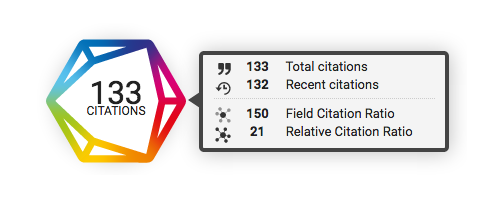Escaping the Silo

How Dimensions allows publishers and institutions to escape the limitations of siloed data
Since Dimensions launched in January, Digital Science has been talking and writing about how the platform breaks down barriers between different types information that have previously been siloed. But how do silos develop and why are they so damaging?
Silos are created for many different reasons and are usually not intentional. While research administrators and institutional managers need to be able to look at their institution as whole, most individual researchers will closely identify with their academic department. With different departments often housed in different buildings it’s easy to see why knowledge about the research landscape - potential grants, recent publications, and research outputs such as patents - can become trapped in different siloes.
In publishing companies silos can develop in a different way; between parts of the publishing process. Commissioning, production, marketing and sales are different departments, but they all need access to the same data about the wider industry. With many publishers operating globally, different regions can also create siloed information, even when working on the same title.
Many institutions use their library to try and bridge the siloes between between faculties. This is because the responsibility to provide a resource that meets competing needs from one budget means that libraries have a unique visibility of different departments. The role of many libraries has grown to include running an institutional repository, advising on potential publication partners and contributing to research impact assessments, all of which mean gathering data from across an institution and from the wider research landscape. After all, the work of the Archaeology and Zoology departments might be fundamentally different, but they must sit side by side when it comes to research assessment.
The problems created by internal silos can be magnified when they are repeated on the scale of the entire research industry. Silos can be created by space; many funders and institutions work in more than one country and they may not be able to see a global view of their own activity. And silos can be created by process, for instance when grants information at the beginning of a research project is difficult to match to research outputs at the end.
How does Dimensions help?
Dimensions helps the entire research industry to escape these geographical, subject-based and process-created data silos. In Dimensions a single data set contains policy documents, patents, publications, clinical trials, grants, and altmetric data. This single data set creates consistency, and makes information available immediately to anyone who needs it. It’s not necessary to wait for someone to find time to provide information, it’s all there to be explored.
Creating Connections that Count
Creating a consistent data set the size of Dimensions, which has over 4 billion connections between 90 million publications and 884 million citations, takes thoughtful work. Institution Identification allows for reliable results when a single institution has different names, colleges, partnerships and has a name similar to completely different institution. Every type of data has its own challenges and solutions. Categorization , Concept Extraction , Researcher Disambiguation, and Reference Extraction are the key to making the data set work and creating insights where none existed before.
How to escape a silo
The enriched metadata created by Dimensions allows for the discovery of concepts, researchers, organisations, classifications, references and metrics. But more importantly, it allows for the discovery of connections. When information escapes its silo and joins a more open system it creates useful insight that doesn’t exist anywhere else. Because anywhere else it’s the same data, but without visibility on the connections between grants, researchers, institutions and research outcomes, that are created by the data enrichment process.
Releasing research information from a silo is a powerful thing. The possibilities for publishers are clear, they’ll be able to track the academic and broader impacts of their titles and match these to marketing and PR efforts to see how successful those campaigns have been. They can use information on millions of publications to contribute to future editorial strategy. Potential authors, reviewers or editorial board members can be discovered, no matter where in the world they are publishing. Crucially, editorial departments can look at impact, marketing departments can explore other works by the same author - the silos created by different parts of the publishing process are broken down.
The same is true for institutions. When previously siloed information becomes available, researchers can understand where they and their research fit in to the global research landscape. The research office can strengthen funding applications even where evidence needs to be cross disciplinary. They can report, benchmark and strategise without having to wait for information from many different departments. The communications department can discover how recent research fits into trending news stories and publicise institutional success free from the constraints of term time, or academics’ diaries.
Silos can mean duplicated work, inefficiency and inconsistency. They can also slow projects down - if only two or three people can access vital information, their workload can delay many other people, who would be capable of finding the information they need if weren’t trapped in a silo. And just as breaking down barriers can make relationships and connections more visible, leaving them in place means it can be difficult to see how the research landscape fits together. A single consistent data set allows departments within publishers and institutions to work together efficiently. At both publishers and institutions issues can arise that need an immediate response. When information is in a silo these processes can be delayed - or even not happen at all.
With Dimensions, the right information is available to the right people. Users don’t have to wait for someone to report back from their own data silo to add their piece to a bigger picture: the bigger picture is available for everyone to see.
Access Dimensions for free at: https://app.dimensions.ai






